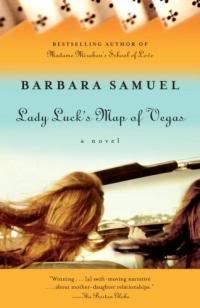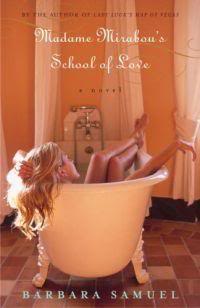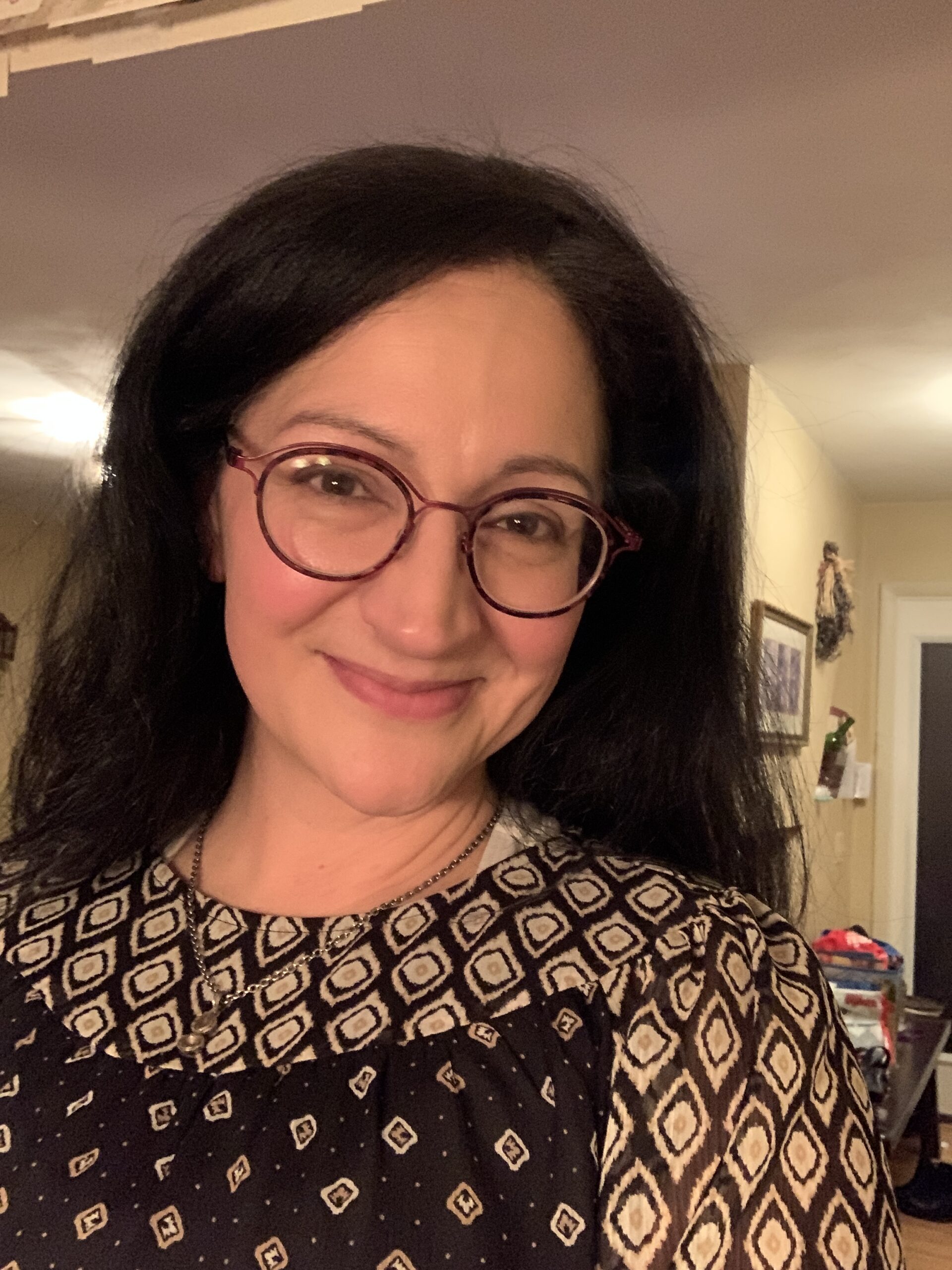INTERVIEW: Barbara Samuel, Part 2
By Therese Walsh | January 26, 2007 |
 If you missed the first part of our interview with women’s fiction author Barbara Samuel, click HERE, then come on back. In part 2 we talk all about her RITA-award-winning book Lady Luck’s Map of Vegas, how to elicit reader involvement and empathy for your characters, the difference between women’s fiction and romance, the controversial “definition of romance,” why Samuel wanted to run away and study perfumery and much more. Enjoy!
If you missed the first part of our interview with women’s fiction author Barbara Samuel, click HERE, then come on back. In part 2 we talk all about her RITA-award-winning book Lady Luck’s Map of Vegas, how to elicit reader involvement and empathy for your characters, the difference between women’s fiction and romance, the controversial “definition of romance,” why Samuel wanted to run away and study perfumery and much more. Enjoy!
Part 2: Interview with Barbara Samuel
Q: Congratulations on your RITA for Lady Luck’s Map of Vegas. Some questions about the book…
By page 8, we know that Eldora desperately wants her daughter India to know who she really is. We also know that India will probably be on a quest to locate her missing mentally ill twin, Gypsy, throughout the book. We also know that India, who has just learned she’s pregnant, fears she can’t go through with her pregnancy, since any baby of hers could potentially inherit mental illness. How important is it to get the goal-motivation-conflict out there in the first few pages, and how many questions can and should you lay out for the reader early on?
BS: I never think in terms of GMC, though it’s a very useful tool. I think about trying to get the reader involved, up to her neck, in whatever is going on. That means creating a sense of tension and worry–what’s going to happen? How can this work out?
And I’m also very concerned, early on, with creating reader identification for the characters, so I wanted India and Eldora to be intriguing if not yet endearing.
Q: You’ve crafted what some might call “risky” characters in Eldora, India and Gypsy. Each has faults, some more glaring than others. Still, we end up rooting for them all in the end. How do you dance through these possible character minefields when writing story to ensure your audience is feeling what you want them to feel? What’s the key to making it work?
BS: I’m not sure there is ever a way to guarantee that a reader feels the way we want her to–but the key to getting close is by realizing that readers, like characters, are not perfect. I realized early on that I was getting a lot more mail about “imperfect” characters than the ones who were more mainstream and “good.”
My challenge in Lady Luck was Eldora. I wanted to write about a woman who had made a lot of bad choices, and some good ones, and one who had lived life on her own terms. But it was important to me that she wasn’t whiney or regretful or weepy, but powerful and at peace with what she’d done. In a way, I hoped it would give readers a chance to let go of anything they were carrying around with them as a big burden. Eldora’s sins are over the top, deliberately, and (I think) we love her anyway. We love her *because* she’s so unapologetic.
And if she’s bad and still loveable, most of the rest of us are, too.
Q: I really enjoyed the way you weaved flashbacks and tellings of Eldora’s past with India’s present day tale. Was it clear for you from the beginning that this was the way to tell this story?
BS: I’m laughing, because if I’d known ahead of time that I was going to write this complicated narrative, I would have been scared to death. As it was, I discovered that I needed one layer, then another.
Part of it was my desire to work with the period of time from Eldora’s youth, the 60s and 70s, and how very unsalable that would be in a novel, and my desire to play with some of the elements of Route 66 and also write about the mood and feeling and beauty of northern New Mexico.
Q: Was it difficult to weave them together in the end, and how did you do it?
BS: I followed the narrative, but I have to admit it was challenging. I was worried it wouldn’t work, that it would be too complicated for readers to follow, and then it just all fell together. It doesn’t even seem complicated when I look at it now!
Q: A quote from your book:
(Romantic comedies are) “…stupid and banal and idiotic. Love doesn’t conquer all. People fall in love for a half hour, then spend the next forty years being annoyed with each other’s bad habits.”
Do you think you’d have been able to use this quote in a romance novel? Do you feel women’s fiction can tackle love and relationships perhaps more authentically than romance?
BS: I probably would have had to cut it from a category romance, but maybe not a single title romance. I don’t know. I never think about these things, and honestly, that’s one of the reasons I think I’ve “gotten away with” things other writers tell me they are surprised to see. My philosophy is, go for it–it can always be cut later.
Q: Do you have an opinion regarding the definition of romance?
BS: I wish it could be broader, honestly. Romance is about two people falling in love. I’m not always happy with the stringent way that seem to sometimes be defined as something like, “two relatively young, usually white, genuinely good people who are attractive and intelligent finding middle class comfortable love.”
There’s nothing wrong with those stories, of course. I love them, too. But I believe in romance, man! I believe in messy, upsetting, wild love that erases all boundaries. I want to read about love really conquering everything. I want survivors who get love the second time around and multiracial and blue collar and everything else.
Q: As someone who’s written wonderful stories in both women’s fiction and romance, can you describe what you feel the most important distinctions are between the genres? And how has women’s fiction evolved since you first began writing in the genre?
BS: I think there’s just a lot more of it.
Romance is part of women’s fiction, which are simply stories of women’s lives. Romance is about a courtship period. Women’s fiction might include a courtship period, or a tale of love and sex, but it will usually include something else, too.
Q: Your romances always have more (the fully developed secondary storyline in Lucien’s Fall; the politically and religiously driven drama in Bed of Spices) and your women’s fiction is always at least somewhat romantic. You’ve found a niche for yourself in this rich in-between place, but I’m wondering if you ever had to fight to keep the detailed story in your romances or make your women’s fiction more romantic. Were there ever any tough editorial decisions along the way?
BS: This is the most constant issue in my writing career–but in general, it’s been more positive than negative. I think romance readers are about 1000 times more intelligent than the market gives them credit for, and women’s fiction readers fall in love like everyone else.
I might have been able to make a more substantial, faster rise to the top if I had stuck with a more mainstream path, but this is better for me.
 Q: A few questions about your latest book, Madame Mirabou’s School of Love. In your acknowledgement, you said that “Some books are harder to write Than others.” Was this book particularly challenging for you? What did you do to break through the walls you faced when writing it?
Q: A few questions about your latest book, Madame Mirabou’s School of Love. In your acknowledgement, you said that “Some books are harder to write Than others.” Was this book particularly challenging for you? What did you do to break through the walls you faced when writing it?
BS: It was a harder book to write, for a lot of reasons which are not important to the discussion. Some of them just are.
If I feel blocked, it means something is not in order, either in terms of what I’m doing with the book, or some edict from outside. I figure out what’s wrong and that gets things moving again.
And I had to do what I’ve always found eventually works: just keep writing. Write and write and write until I find out the truth of this particular book, the heart of it. I didn’t realize, starting out, that Giselle was mixed race, that Nikki’s husband was black. It freaked me out a little to go there, but in the end, it was absolutely right. Ironically, then some of the early readers wanted the race angle to be more primary and I fought that very hard. That wasn’t the issue in the marriage, which broke down for ordinary reasons, though race played a part in her feelings of insecurity later.
[Note: You can read about the “story behind the story” HERE at Samuel’s website.]
Q: I really enjoyed the notes from Nikki’s Perfume Journal and the way you separated the book into sections: Base Notes, Heart Notes and Top Notes. How engrossing did your perfume research become? I’m picturing you at the computer with bottles of herbs opened up, simmering potpourri, etc… Did you rely on sensual inspirations to help move the story along?
BS: I’m laughing, because I did become unbelievably immersed in the research for this book. I wanted to leave writing and go to Grasse and study the art of perfume! My research was buying bottles of perfume oils and studying the entire realm, and I honestly did sit at the computer with tiny brown bottles of essences and sniff them. The bottles are now in the closet where I keep my art supplies, and it smells fantastic when I open it–all fir and frankincense and lemon.
Q: The character of Roxanne surprised me. I originally saw her as the Wise One, but she definitely spun out of control and landed herself into a few loads of trouble. Did she ever surprise you while you were writing? Was her character difficult to direct? (If so, how do you manage “troublesome” characters?)
BS: Roxanne was hard to manage, but I always knew she would be the Shadow character, the example of the road Nikki could have traveled.
Since my process is very organic, if a character keeps misbehaving, I step back and let him/her lead. There’s always a reason. I might not see that right away, now, but eventually I will realize that I need to stop directing and let the characters show me the story.
Q: In a disaster situation, if you had the opportunity to save only five books from your shelves, which would you choose? (craft or otherwise)
BS: FIVE BOOKS? Okay, hmm. I’m going to go with inspirational books:
The Artist’s Way by Julia Cameron
Women Who Run With the Wolves by Clarrissa Pinkola Estes
Story by Robert McKee
Walking On Water by Madeline L’Engle
Creative Visualization by Shakti Gawain.
Q: What’s the best advice you’ve ever received as a writer?
BS: Finish every book.
Q: Name one thing people would be surprised to learn about you.
BS: That I’m quite a private person in many ways and keep a lot to myself.
Q: What are you working on next? Can you provide us with any juicy hints?
BS: I’m up to my ears in it, but it’s still only about midway, so I’m loathe to say much. One thing I can say is that it’s filled with food, food, food. And Colorado, in a very fun way that I haven’t done before. And there is a really, really great dog.
Q: I can’t resist asking: the cookbook you mention in Madame Mirabou’s School of Love, Spoonbread & Strawberry Wine, sounds like a great one to own. Have you tried the cornbread recipe?
BS: I actually have my own cornbread recipe that I love, but that’s one of my very favorite cookbooks. The anecdotes and pictures are worth the price. If you do not own it, I *highly* recommend it.
Thank you, Barbara Samuel, for a terrific interview, and best of luck with your next works!










Oooh, awesome interview, Therese! She’s an amazing writer, and you’ve teased some great insights out of her.
this interview was thought provoking and gave a lot of good advice to the romance/WF writer in terms of character development. i like the way this author thinks.